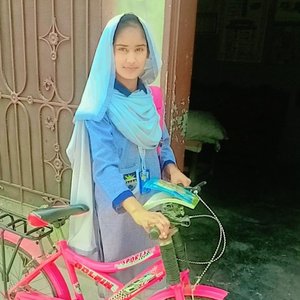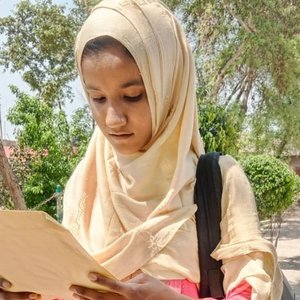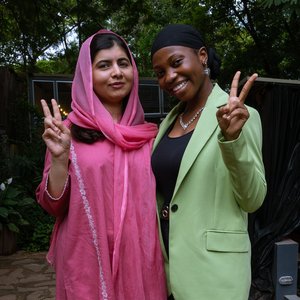The history of intersectionality and the Black feminists behind it
(Courtesy of Amara Ochefu)
To understand the complexities of intersectionality and how it affects Black girls and women today, we need to understand the term’s history.
The term intersectionality has become a buzzword in recent years, with searches for the term increasing steadily since 2014. Although I’m encouraged to see people educating themselves on this topic, too often the origins of this term get lost in translation. In order to understand the complexities of intersectionality and how it affects Black girls and women today, we need to understand the term’s history and the Black feminists who helped create it.
Legal scholar Kimberlé Crenshaw first coined the term intersectionality in 1989, defining it as the way in which multiple forms of inequality or oppression (such as racism, sexism, classism, ableism, heterosexism and more) can compound and create different modes of discrimination or disadvantage. But before Crenshaw, there was a long history of Black feminists speaking out about how their experiences differed from both White women and Black men.
One early example is American abolitionist and women’s rights activist Sojourner Truth’s 1851 speech “Ain’t I a Woman?,” which highlighted how her lived experience as a formerly enslaved woman did not fit into the conceptions of womanhood constructed around upper-class White women. While society considered White women “the weaker sex,” there was little distinction between the societal expectation of enslaved women and enslaved men. Truth pointed out the double standard of womanhood and the differences in the obstacles Black women faced, which social justice movements failed to recognise.
In the 1970s the Combahee River Collective, an organisation of Black feminist lesbian socialists, made similar observations. Pulling from the activists that came before them, they set out the philosophies of Black feminism, including the belief that Black women are inherently valuable and our liberation is necessary, the need to dismantle oppressive political-economic systems of capitalism and the commitment to stand in solidarity with feminists in colonised and formerly colonised countries who were fighting against imperialism. These activists fought against racial, gender, heterosexual and class oppression and observed that major systems of oppression are “interlocking.” The Combahee River Collective recognised that we need to destroy all systems of oppression in order to liberate all people.
As this history shows, Black women have worked to catalogue and organise against these “interlocking” systems of oppression for a long time, but Kimberlé Crenshaw eventually gave the operation of these systems the name intersectionality in her paper “Demarginalizing the Intersection of Race and Sex” (1989). Her work followed the legacies of other Black feminists who have addressed race through a gender lens and used legal cases to make points. She described the discrimination that Black women face with the metaphor of a road intersection: Racial discrimination was one road, gender discrimination was another and the experiences of Black women were at the centre of where these roads cross. Hence the term intersectionality.
“Before the idea of intersectionality was widely known, most people assumed Black women experienced the culmination of racism (based on the experiences of Black men) and sexism (based on the experiences of White women). They did not acknowledge that Black women’s experiences can be completely distinct from either group.”
Before the idea of intersectionality was widely known, most people assumed Black women experienced the culmination of racism (based on the experiences of Black men) and sexism (based on the experiences of White women). They did not acknowledge that Black women’s experiences can be completely distinct from either group. Many non-Black women of colour, poor women, women in formerly colonised countries and LGBTQ+ femmes could relate to the metaphor and add their own “roads” to describe their lived experience. One of the positive features of intersectionality is its flexibility; it is a framework that can be applied to many different people in marginalised groups. For example, a girl with autism sits at two different intersections and therefore faces the culmination of misogyny and ableism. This can play out in real life as many autistic girls are not diagnosed because they do not fit the typical symptoms which are modelled around autistic boys. However, the breadth of the term “intersectionality” also created a need for Black women to have a separate term that described the specific type of discrimination they faced. In 2008 Moya Bailey, an African American feminist scholar, noticed that the way the media and popular culture treated Black women was different from the way they treated other women of colour. She created the term misogynoir to describe discrimination against Black women resulting from the combination of misogyny and anti-Black racism. Misogynoir is rooted in intersectionality and follows in the tradition of the Black feminists who coined the latter term. It has become increasingly popular in recent years and people now use it to describe broader issues relating to the lives of Black women.
Intersectionality and misogynoir are not just theories, they can be seen in the lives of Black women and girls every day. In her article for Assembly, student activist Tiyi Ayeva highlighted different examples of misogynoir in society. For example, adultification bias is when society treats Black girls as if they’re older and less innocent than their non-Black peers. This bias not only strips Black girls of their childhood but also means they often face harsher punishments than other students and are sexualised at young ages, resulting in increased exposure to sexual harassment and predatory behaviour. Society uses stereotypes like the Angry Black Woman, sometimes called “The Sapphire Caricature,” to characterise Black girls because it is easier to dismiss the root cause of our anger if you believe that we are just angry by nature. Individuals and institutions also label Black girls as loud, deriding us for being noisy and therefore “unladylike” while also pressuring Black people to assimilate and not draw attention to ourselves in front of White people. Stereotypes of Black women combined with gender norms can bear down on Black girls, limiting their interests and their potential.
Terms and definitions can often feel like an inconvenience when trying to understand feminist theory. But we cannot fully address the issues that Black women and girls face without first understanding them, and these definitions offer a way to scrutinise and critique misogynoir. As the framework of intersectionality becomes more popular we need to understand it, use it correctly and recognise the history behind it. We must remember the Black women who helped us to articulate these experiences and honour them by continuing their legacy of feminism, anti-racism and anti-imperialism. Here are some places to start:
Read more Black feminist theory: “Women, Race & Class” by Angela Davis, “White Innocence” by Gloria Wekker, “Black Feminist Thought” by Patricia Hill Collins, “Bad Feminist” by Roxane Gay and “How We Get Free: Black Feminism and the Combahee River Collective” by Keeanga-Yamahtta Taylor
Read fiction books that capture the experiences of Black women: “The Bluest Eye” by Toni Morrison, “I Know Why the Caged Bird Sings” by Maya Angelou, “Zami: A New Spelling of My Name” by Audre Lorde, “The Joys of Motherhood” by Buchi Emecheta (the title is ironic), “Parable of the Sower” by Octavia E. Butler and “Homegoing” by Yaa Gyasi
Follow Black activists: Zyahna Bryant, Mari Copeny, Wretched of the Earth, Ericka Hart, Mayowa, Vanessa Nakate, The Feminist Coalition, No White Saviors, Munroe Bergdorf and Sistah Circle Collective
 Read more
Read more












